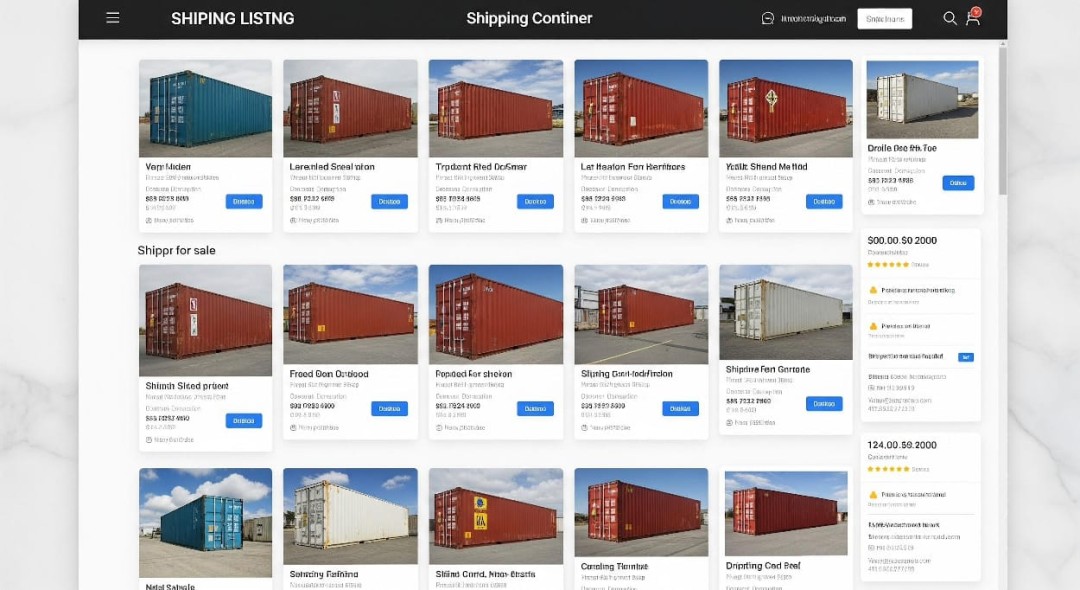
Learn how to identify fraudulent shipping container vendors and secure reliable, risk-free purchases.
For procurement officers working in logistics, manufacturing, or construction, shipping containers are a mission-critical purchase. Yet despite their industrial utility, the buying process isn’t always straightforward. The online marketplace is filled with misleading listings, unverifiable vendors, and unexpected logistics hurdles. A single misstep—whether due to unclear pricing, fraudulent sellers, or overlooked delivery details—can delay operations and inflate budgets.
This guide focuses on how to identify common pitfalls and make informed decisions when sourcing Shipping Containers, especially when managing container purchases for medium-to-large-scale operations.
Verify the Listing Before You Make a Move
One of the biggest pain points today is the rise of fraudulent listings. Scammers often use stock photos, mimic legitimate businesses, or advertise below-market prices to lure buyers. According to Canadian consumer reports, victims are often persuaded to send funds via e-transfer or wire without seeing the container or confirming vendor legitimacy.
To protect your purchase:
- Request recent, high-resolution images from multiple angles
- Ask for the container’s serial number or condition report
- Verify the seller’s physical business location and contact methods (avoid personal Gmail addresses or numbers)
Avoid vendors unwilling to provide this basic documentation. Any hesitation around site visits or detailed specs is a major red flag.
Decoding the Real Cost of a Container
Another consistent source of confusion is pricing. Containers are typically classified into one-trip (new), cargo-worthy, wind-and-watertight (WWT), or as-is condition—yet many listings don’t specify this clearly. A 20-foot container might range from CA$2,700 to over CA$4,000 depending on condition and location, and 40-foot containers can exceed CA$6,000 when delivery is included.
To avoid pricing surprises:
- Ask if the quote includes delivery and offloading fees
- Clarify whether the container is graded and certified (e.g., cargo-worthy)
- Get quotes in writing to confirm scope and duration of validity
For procurement officers balancing budgets across multiple vendors, clarity in these elements ensures more predictable cost control.
Plan for Delivery From the Start
Even if the container is real and the price is fair, delivery can pose unexpected problems. Many corporate buyers overlook site accessibility, required permits, or the availability of tilt-deck transport—resulting in last-minute changes or fees.
To stay ahead:
- Ensure your site can accommodate container delivery (sufficient clearance and ground conditions)
- Schedule the delivery date and window clearly
- Identify who is responsible for unloading—some companies drop curbside only
It’s wise to verify whether the container will be placed on gravel, pavement, or a foundation. For sensitive equipment or temporary offices, surface prep can prevent long-term wear or instability.
Account for Customization and Environmental Needs
If you're purchasing containers for office use, electrical storage, or long-term deployments, structural modifications often come into play. However, improper cutting, insulation, or loading can weaken container integrity or violate local codes.
Considerations include:
- Climate-appropriate insulation (spray foam vs. panel)
- Proper ventilation and HVAC access
- Window and personnel door installations with structural framing
- Local zoning or building code compliance for modified units
Engage with vendors who provide modification specs in advance and understand regional building standards. Cutting corners at this stage can result in downtime or fines.
Final Thought: Secure the Value, Not Just the Steel
Whether it’s for secure on-site storage, equipment housing, or temporary workspaces, the true value in shipping containers lies in a vendor’s reliability—not just the container itself. Verifying a listing, understanding the pricing model, managing delivery timelines, and anticipating customization requirements will not only reduce risk, but also streamline operational efficiency.
By focusing on transparency and informed planning, procurement professionals can avoid delays, stay within budget, and maximize long-term container value.
Additional Resources Explore certified Steel Shipping Containers available in Canada for commercial use.
Buy Shipping Containers in Canada | Sea Can Guys
Media Contact
Company Name: Seacanguy
Contact Person: Michael Williams
Email:Send Email
City: Toronto
Country: Canada
Website: https://seacanguy.ca/
